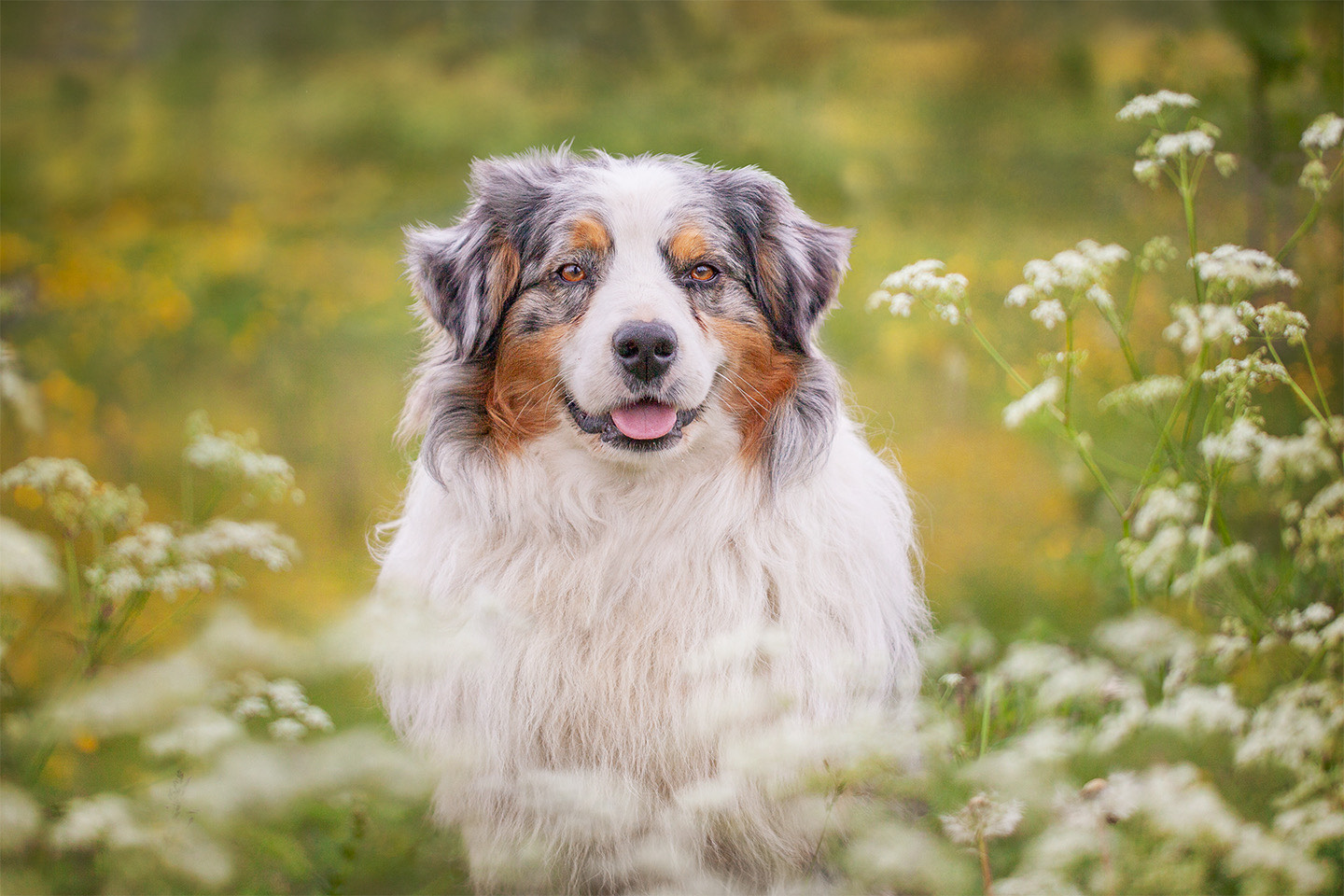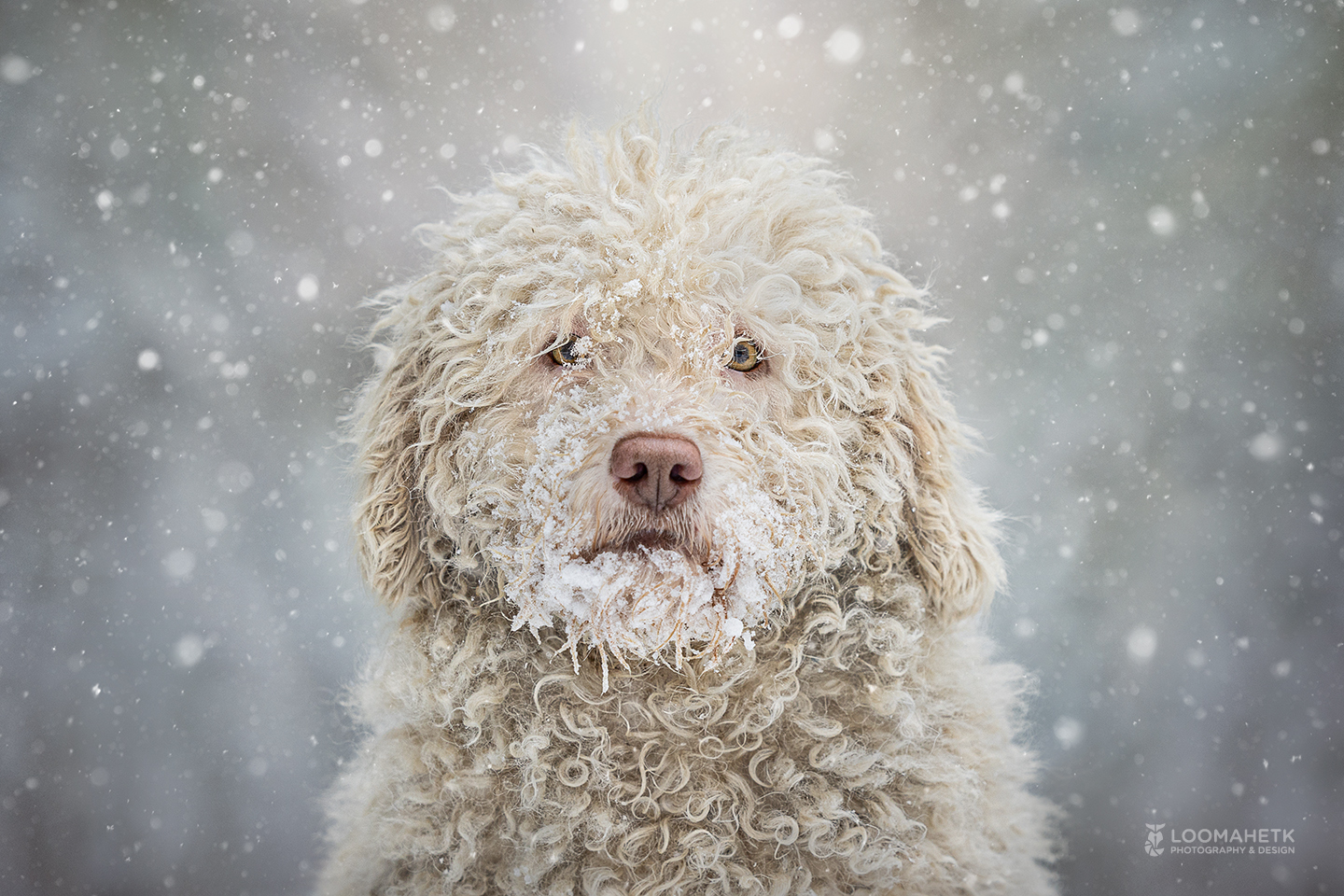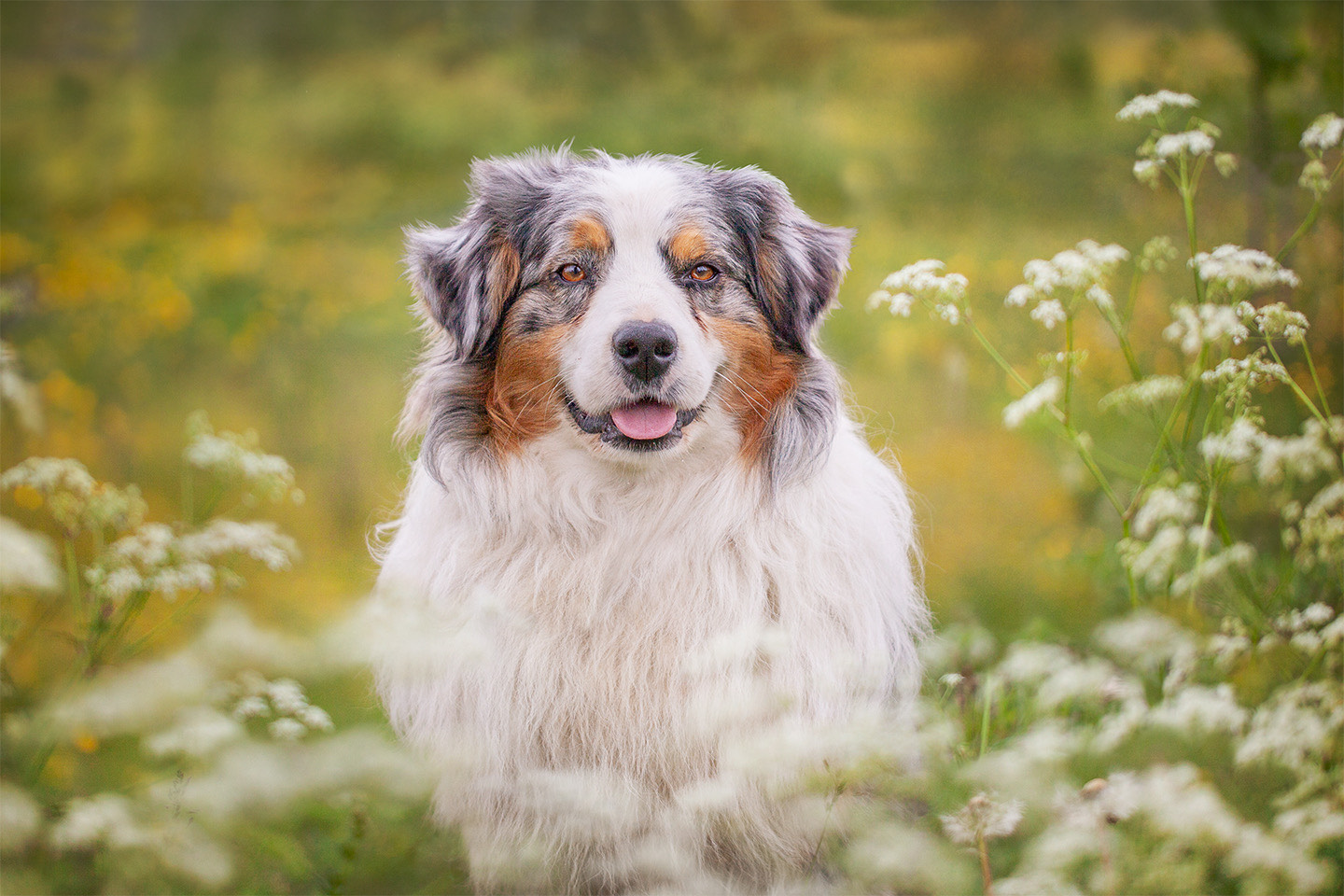Solid, muscular and robust, the Australian Shepherd is an athletic dog who looks like they are built to work. Slightly longer than they are tall, Aussies have a medium length coat that should be straight or very slightly waved with a thick weather resistant undercoat. Tails, if present, should carry decent feathering and be set on in line with the croup. Some are born naturally tailless.
- Dog suitable for owners with some experience
- Extra training required
- Generally healthy breed
- Enjoys vigorous walks
- Enjoys more than two hours of walking a day
- Medium dog
- Minimum drool
- Requires grooming every other day
- Chatty and vocal dog
- Barks and alerts to visitors/anything unusual
- Could have issues with unknown dogs but gets along with known dogs
- Gets along with other pets with training
- Great family dog
- Needs a large garden
- Best suited to countryside
- Cannot be left alone
Personality
With strong working instincts, particularly the instinct to herd and drive groups of animals, and a natural suspicion of strangers, the Australian Shepherd is devoted to their owners, and loves to be a part of family life, if that family can offer the right active lifestyle. Early dog socialisation with other animals and children is vital, and Aussies must be given a job to do and plenty of physical and mental exercise to keep them satisfied and content. For the right owner, they can be the perfect dog but like most working breeds, a bored Aussie is a nightmare to live with.
History and Origins
Country of Origin – America
With a somewhat misleading name, the Australian Shepherd is actually an American breed, bred to herd sheep imported from Australia. Shepherds from the Basque region of the Pyrenees took their native small ‘blue’ (blue merle) dogs to work in the U.S in the late 1800’s to early 1900’s. It is also possible that they could originate from dogs first imported from Australia, then mixed with native dogs in the U.S in the late 1800’s so there is more of a potential Australian connection.
Since they were created, bred or imported to work, working ability was significantly more important than appearance, and it is no surprise that they share many physical traits with other well established pastoral breeds.
The Aussie has remained a popular herding dog in the U.S. for over a century, particularly as although bred to herd sheep, the Aussie is also adept at working with cattle.
More recently, the Aussie has turned a paw to a variety of canine sports and proven to be a versatile and adaptable competitor in obedience, scent work, agility, disc-dog, search and rescue and field trial competition.
Health and Common Concerns
The Australian Shepherd dog is generally a very healthy breed. However as with many breeds, they can suffer from various hereditary eye disorders, and hip dysplasia (a condition that can lead to mobility problems). Eye testing and hip scoring of dogs prior to breeding is therefore important.
Exercise Needs
The Australian Shepherd needs at least two hours of dog exercise a day, ideally more. The Aussie also needs plenty of mental stimulation in the form of training, puppy games and puzzle solving and this is in addition to physical exercise, not instead of! Something of a training-junkie, the Aussie is very capable of performing at a high level in a variety of canine sports and activities, so ideal owners will be those who want to compete and enjoy training as a hobby in its own right.
Space Requirements
The Aussie Shepherd is not in need of a vast or lavish home, at least on the inside, however a large secure garden is important, as is access to a variety of interesting walks. Access to safe outdoor space for free running and training will be necessary. Better suited to quiet suburbs, rural or country living, the Australian Shepherd may find busy towns and cities overwhelming.
Nutrition and Feeding
The Australian Shepherd needs to have a balanced diet including all the main nutrient groups and a constant supply of fresh water. It's also important to conduct regular body condition scores to ensure you keep your dog in ideal shape and remember to feed them at least twice daily and in accordance with the feeding guidelines of their particular food.
Grooming Australian Shepherd Dog
The Australian Shepherd’s coat is medium in length, with a weather-resistant undercoat. There's some feathering (longer hair) on the back of the legs and a moderate mane, which is thicker on male dogs. A brush through two or three times a week should suffice, with more frequent grooming needed when the coat sheds - or if your Aussie is a water or mud lover! You can find out more about dog grooming and daily care with our article.
Training Australian Shepherd Dogs
Trained using positive reinforcement, the Aussie can learn any sport, activity or task that a dog can physically achieve – however whilst this may sound appealing, it is not easy. They are easily capable of learning the wrong things every bit as fast, or faster, than the right things and so careful management must go alongside dog training. Early socialisation with children and other animals is vital, as is training a solid recall, walking on a loose lead and a ‘quiet’ cue! Aussies have done well at sports including agility, obedience, disc-dog, Hoopers, scentwork and more, and need plenty of activities to keep their minds busy and bodies content.
Best Family Dog Breeds
With children old enough to take part in training, the Aussie can make a great family dog, however the time needed to exercise and train may rule out families with very small children. Keep in mind the Australian Shepherds desire to herd – small children, particularly those belonging to other people, often do not like to be gathered and kept in a group by a dog!
While many dogs are traditionally thought of as being good with children, all dogs and children need to be taught to get on with each other and be safe together. Even so, dogs and young children should never be left alone together and adults should supervise all interactions between them.
Did You Know?
Despite being one of the lesser-known breeds and commonly mistaken for the Border Collie, the Australian Shepherd is remarkably popular with celebrities. Famous owners include actress Amanda Seyfried (The Art of Racing in the Rain - a fabulous dog film), Susan Sarandon, Bruce Willis, Demi Moore, director Steven Spielberg … the list is almost endless!







